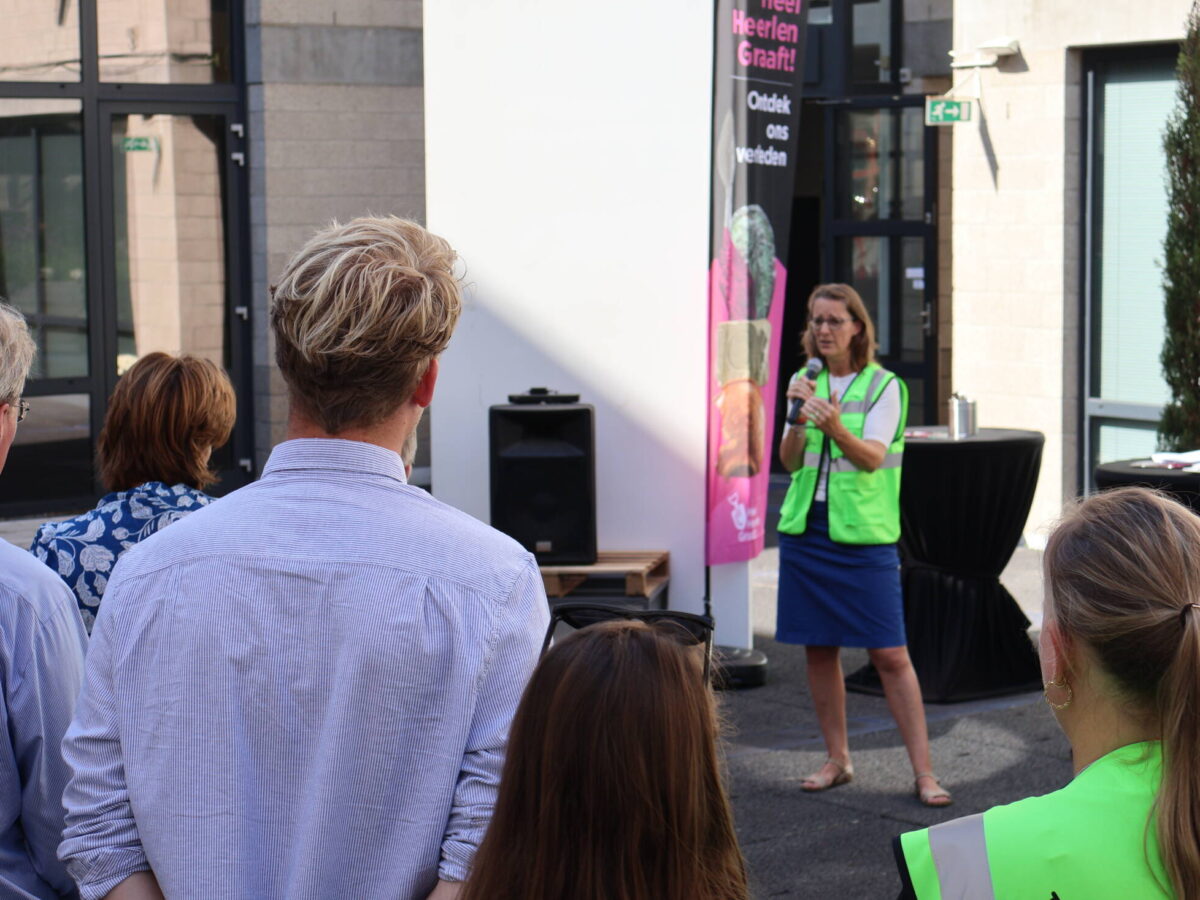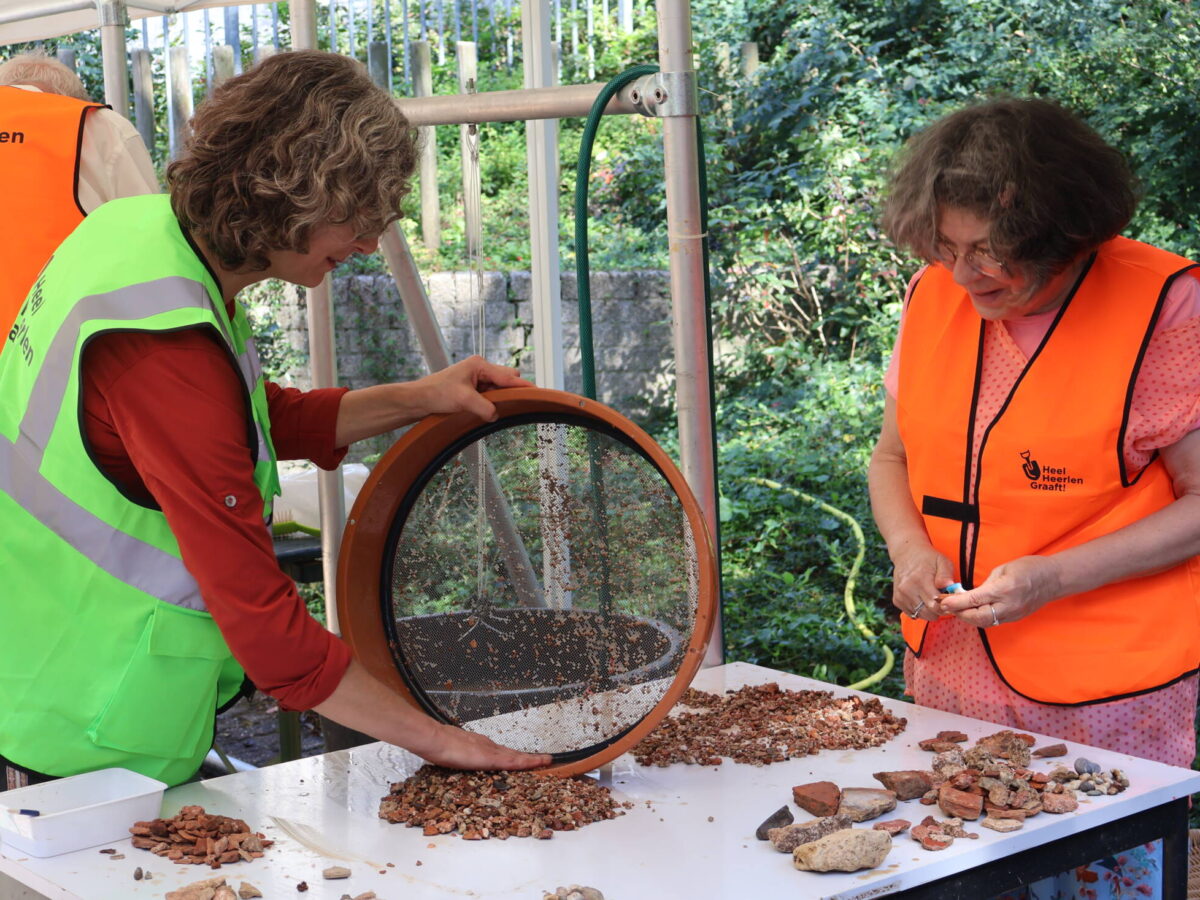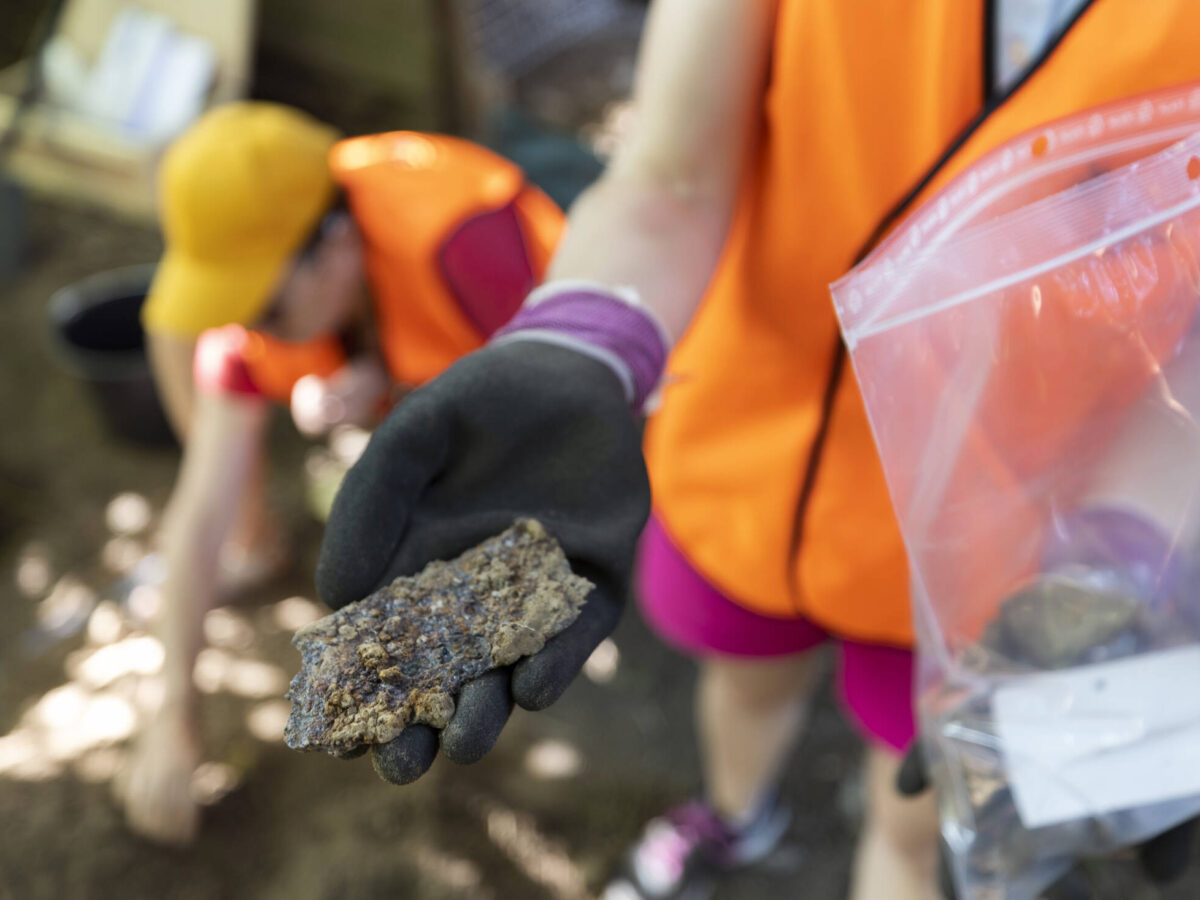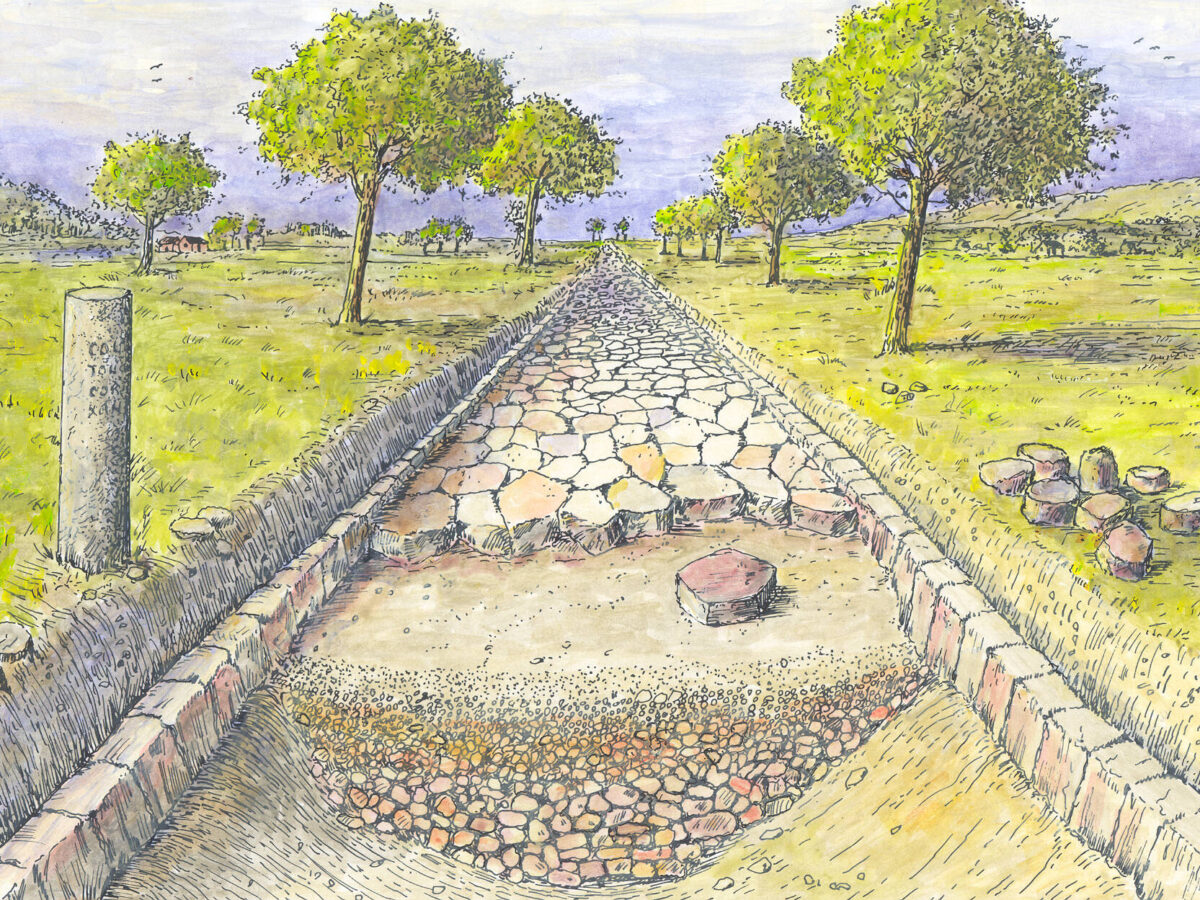That’s why archaeologists are digging in Heerlen, 75 km from the Limes
Author: Harry Lindelauf
Photography: Harry Lindelauf from Utrecht University.

Why are researchers from Utrecht and Wageningen searching for Roman remains 75 kilometres away from home? The question arises because of the link between the projects Constructing the Limes and Heel Heerlen Graaft.
“Limes” means “border.” In Roman times, the Rhine formed the northern boundary of the Roman Empire. The project Constructing the Limes brings together the expertise of dozens of specialists to find answers to many questions. The project leader, Dr Saskia Stevens from Utrecht University, is an expert in the archaeology and history of the Roman period. She explains why Heerlen was chosen: “In our project, we study the influence of the Limes on the hinterland of that frontier. Roman Heerlen was an important place within that border region, and Heel Heerlen Graaft gives us a unique opportunity to understand how that influence worked in practice. We are researching what Roman Heerlen looked like, what people ate, what goods they used, and where those came from.”

Multiple research directions
Several lines of research have been defined: mobility of people, distribution of objects and goods, and how politicians up to the present day refer to the Limes in speeches or policy. One research area focuses on the border’s influence on migration: who lived in the frontier region—were they locals or people who came with the Romans, and where had they lived before?
A CSI setting in Heerlen
The answers to these questions on migration and new diets may be found thanks to a new archaeological technique: the analysis of ancient DNA from soil layers (sedimentary DNA). During Heel Heerlen Graaft, in a kind of CSI setting, soil samples were taken from eight excavation pits at depths between 60 and 100 centimetres within the Roman layer. In the laboratory of the University of Copenhagen, these samples are analysed for traces of ancient DNA, which reveal remains of plants and animals. Dr Stevens explains: “This allows us to learn more about biodiversity in Roman times, about people’s diets, and about possible pathogens.”

Latrines and wells
At other sites, Roman latrines and wells are targeted by researchers hoping to find remains of crops and pathogens. The technique is relatively new in archaeology and was used on this scale for the first time during Heel Heerlen Graaft. Within the Constructing the Limes project, specialists from the universities of Copenhagen, Utrecht, and Wageningen are developing this DNA method further for archaeological research.
The data will later be processed into distribution maps showing diet patterns—revealing whether and where the Limes played a role.
Archival research
Heel Heerlen Graaft was designed to involve residents in their past and in scientific research—and it succeeded: around 150 residents became “archaeologists” for a weekend.
Dr Stevens is delighted: “Citizens sometimes have detailed local knowledge that we as researchers don’t.”
She stresses this point in many interviews, as the Heerlen excavation drew national attention in early September 2023.
Much less visible in the media is the meticulous archival research that is also part of the project. Analyses of letters, books, and historical maps help to trace how the Roman border has influenced ideas and identities up to the present day.
The results of this major scientific project will be published in the coming years.
Early 2024 will see the release of the ancient DNA study, and a closing event for the excavation is being planned in Heerlen.
Researchers are preparing academic publications, and all findings will be brought together in a public book to appear in 2026, along with a final exhibition.
Dr Stevens looks back with great pleasure on the “heart-warming enthusiasm” for Heel Heerlen Graaft.
Her wish for a next excavation with local citizens:
“Utrecht—because of the Roman remains under Dom Square, or in Leidsche Rijn. It would be wonderful if the municipality would take up that idea.”
Heart-warming enthusiasm
The results of this major scientific project will be published in the coming years.
Early 2024 will see the release of the ancient DNA study, and a closing event for the excavation is being planned in Heerlen. Researchers are preparing academic publications, and all findings will be brought together in a public book to appear in 2026, along with a final exhibition.
Dr Stevens looks back with great pleasure on the “heart-warming enthusiasm” for Heel Heerlen Graaft. Her wish for a next excavation with local citizens: “Utrecht—because of the Roman remains under Dom Square, or in Leidsche Rijn. It would be wonderful if the municipality would take up that idea.”


